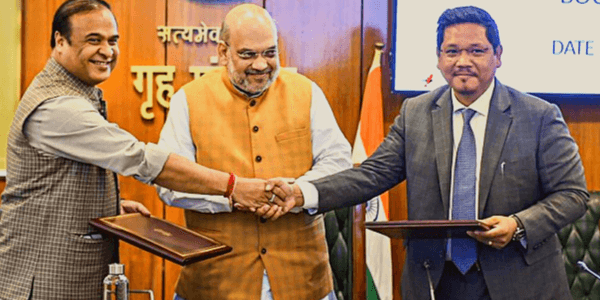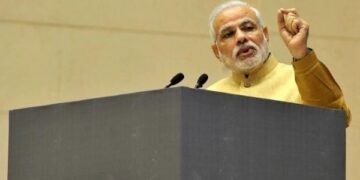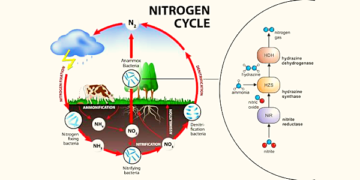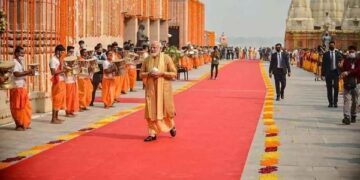The Assam-Meghalaya Border Dispute will be discussed in this article. First, let us look more into the Assam-Meghalaya Border Dispute, its history, and the recent update of the dispute (2022). The boundary-resolution agreement between Assam and Meghalaya. as well as other important information. This topic, which is covered in GS – Paper II, is significant for your UPSC test preparation. Read the whole thing. So Let’s get started.
- Assam Meghalaya Border Dispute
- History of Assam Meghalaya Border Dispute
- How did the two governments deal with the Assam Meghalaya Border Dispute?
- Recent Agreement Updates 2022
- Impact of the agreement
- Conclusion- Assam Meghalaya Border Dispute
- FAQ- Assam Meghalaya Border Dispute
- Editor's Note | Assam Meghalaya Border Dispute
Assam Meghalaya Border Dispute
Several boundary conflicts affect India’s northeastern area. Almost the majority of these border conflicts date back to colonial times, and they are the result of the British policy of annexing and exploring lands in the region to create and re-create boundaries for administrative convenience.
The Union administration has attempted to address these conflicts but has had little success because one or both of the states has remained uncooperative. With rebels and criminals gaining the upper hand, the region’s security situation is threatened. As a result, both countries struck a historic agreement for the closure of six disputed sectors that were the subject of the first phase’s discussion.
Tarabari, Gizang, Hahim, Boklapara, Khanapara-Pillangkata, and Ratacherra are the six disputed sectors of Assam’s Kamrup (Metro) & Cachar districts, as well as Meghalaya’s West Khasi Hills, Ri-Bhoi, & East Jaintia Hills districts.
There are currently 12 sources of conflict along their borders.
Upper Tarabari, Gazang reserve forest, Hahim, Langpih, Boklapara, Borduar, Matamur, Khanapara-Pilangkata, Nongwah, Deshdemoreah Block I & II, Khanduli, and Retacherra are among those affected.
The West Garo Hills district of Langpih, which borders the Assam district of Kamrup, is a significant point of conflict between the 2 states.
Langpih was part of the Kamrup district during British colonial rule, but following independence, it became part of the Garo Hills and Meghalaya. It is thought to be part of Assam’s Mikir Hills. Blocks I & II of the Mikir Hills, which are now part of Assam’s Karbi Anglong region, have caused anxiety in Meghalaya. According to Meghalaya, they were originally part of the United Khasi and Jaintia Hills districts.
Historical facts, ethnicity, administrative convenience, the feelings and emotions of the people involved, and the land’s proximity are all factors to consider.
Why in news
In the presence of Union Home Minister Amit Shah, the chief ministers of Assam and Meghalaya signed an agreement on Tuesday, March 29, 2022, to resolve a 50-year-old dispute along their 884.9-kilometer border.
Other significant topics for UPSC exam preparation can be found in the UPSC Study Material section of the website. So don’t forget to check the link, where you’ll also find important study materials.
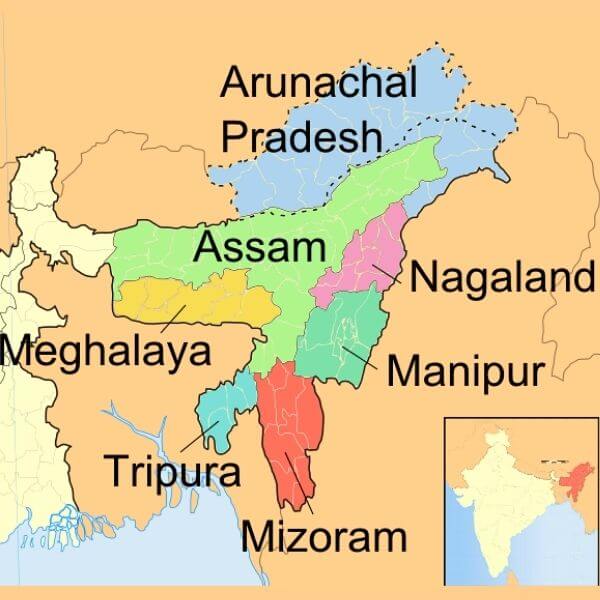
History of Assam Meghalaya Border Dispute
- In 1970, Meghalaya declared independence from Assam, and in 1972, it became a full-fledged state.
- The Assam Reorganisation (Meghalaya) Act of 1969 was used to establish Meghalaya.
- Because it was based on the recommendations of a 1951 committee to establish Meghalaya’s boundaries, the Meghalaya government rejected the Act.
- Regions of the present-day East Jaintia Hills, Ri-Bhoi, and West Khasi Hills districts of Meghalaya were relocated to the Karbi Anglong, Kamrup (metro), and Kamrup districts of Assam based on their suggestions.
- Following the statehood, Meghalaya fought for these areas, alleging they belonged to Meghalaya’s tribal chieftains.
- Assam claimed that Meghalaya’s government could not present documentation or archive materials to support its claim to these lands.
- The issue was reduced down to 12 areas after various assertions, depending on an official claim by Meghalaya in 2011.
Other boundary disputes in North-East
There are a number of other boundary concerns in the northeast.
- The Northeastern states were largely formed from Assam, which has numerous border disputes with other states.
- Nagaland, Arunachal Pradesh, and Meghalaya, as well as Mizoram, are now part of Assam. During British rule, each of these states formed an independent state. As a result, Assam is currently having boundary disputes with each of them.
- Nagaland and Assam share a 500-kilometer boundary.
- In 1979 and 1985, at least 100 people were killed in two major violent incidents. The Supreme Court is now debating the question of borderlines.
- According to the same study article, confrontation on the Assam-Arunachal Pradesh border (approximately 800 km) was first documented in 1992. Since then, both sides have claimed illegal growth, and there have been frequent clashes. This boundary dispute is currently before the Supreme Court.
- The 884-kilometer border between Assam and Meghalaya is also prone to flare-ups. There are now twelve (12) areas of contention between the 2 states, according to Meghalaya government declarations.

How did the two governments deal with the Assam Meghalaya Border Dispute?
- To address the problem, a joint governmental committee was constituted in 1983.
- The committee recommended that the Survey of India re-define the boundary with the participation of both States, but no action was taken.
- An impartial panel led by Justice Y.V. Chandrachud was established in 1985.
- Meghalaya rejected the report because it was reportedly pro-Assam.
- In 1991, both countries agreed to use the Survey of India to demarcate the line jointly.
- By the end of 1991, almost 100 kilometers of the border had been marked, but Meghalaya deemed the exercise unlawful and refused to cooperate.
- The Meghalaya Assembly approved a resolution in 2011 calling for federal action and the establishment of a boundary commission.
- In response, the Assam Assembly passed a resolution opposing the move.
- The Centre forced the two governments to select nodal officers to talk about the border dispute.
- The state of Meghalaya petitioned the Supreme Court in 2019 to order the Centre to resolve the matter, but the plea was denied.
Recent Agreement Updates 2022
- In January 2021, the Union Home Minister encouraged the north-eastern states to resolve their border disputes by August 15, 2022, the country’s 75th anniversary.
- Assam and Meghalaya started negotiations in June 2021, agreeing to a “give-and-take” policy to resolve their differences.
- Six sections, including Tarabari, Gizang, Hahim, Boklapara, Khanapara-Pilingkata, and Ratacherra, were considered for negotiations in the first round out of the 12 contested sectors.
- The states established a regional committee for each area that was affected by the conflicting regions.
- The committees, led by cabinet ministers, conducted surveys and talks with diverse stakeholders based on “five principles,” which include:
- Historical facts (Information from the past)
- Ethnicity
- Convenience in administration
- People’s willingness
- Natural borders such as rivers, streams, and rocks define the land’s contingency.
- In January 2022, the two states signed a draught resolution based on the committee’s recommendations.
- Six contested regions were the subject of an accord concluded on March 29, 2022.
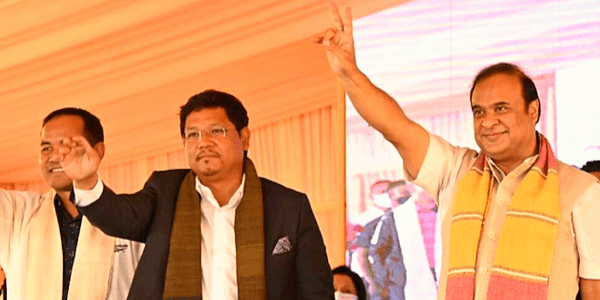
Impact of the agreement
- According to the deal, Assam will gain 18.51 sq km of the 36.79 sq km disputed zone, while Meghalaya will get the rest.
- Political parties and a few communities in Meghalaya are unhappy with the arrangement, notwithstanding the lack of clarity on the unoccupied portions that would be separated.
- The residents of the remaining six contested localities, including Langpih, Borduar, Nongwah, Matamur, Deshdemoreah Block I and Block II, and Khanduli, believe that the accord will harm their interests.
- Non-tribal groups have expressed dissatisfaction, fearing that they will be forced to live in a “tribal Meghalaya with no rights.”
- Residents of Assam who live in congested areas along the state’s border with other states have similar concerns.
Conclusion- Assam Meghalaya Border Dispute
In conclusion, the article contains detailed information about the Assam-Meghalaya Border Dispute. We also discussed the history of the border conflicts, how the two governments dealt with the Assam-Meghalaya border issue, the recent updates, and the agreement’s impact. So take your time and read this information thoroughly. Then, visit the UPSC official website for more information about the examination.

FAQ- Assam Meghalaya Border Dispute
The conflict began in the 1970s as a result of tensions between the native Assamese people and the Indian government over claimed neglect, political, social, cultural, and economic difficulties, as well as growing levels of illegal immigration from Bangladesh.
The statutory entity is the Zonal Council.
The States Reorganisation Act of 1956, which formed them, is a Parliamentary Act. The act established five zones in the country: Northern, Central, Eastern, Western, and Southern, each with its own zonal council. The country’s natural divides, river systems, communication ways, cultural and linguistic affinity, and the necessities of economic development, security, and law and order were all taken into account when creating these zones.
Guwahati, Assam’s largest city, has the finest road, rail, and aviation connections to any portion of Northeast India. As a result, it can be seen as a gateway to Northeast India.
Prior to the addition of Sikkim into the North Eastern Region of India, the neighboring states of Arunachal Pradesh, Assam, Meghalaya, Manipur, Mizoram, Nagaland, and Tripura were known as the Seven Sister States.
Editor’s Note | Assam Meghalaya Border Dispute
In summary, the article contains all of the relevant information on the Assam-Meghalaya Border Dispute. Other information about the border dispute has also been provided. This is an important topic for your UPSC test, so take notes as you read. The UPSC CSE Exam (also known as the UPSC IAS Exam) is one of the most difficult exams in the country. Needless to say, dedication and the proper approach are required. There is no shortcut to passing this exam; you must study diligently. So have faith in yourself and don’t give up. Finally, best wishes.

